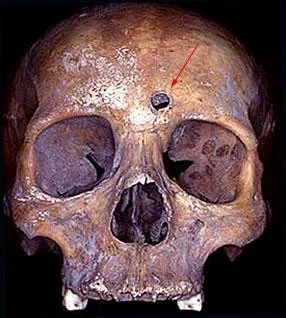Forensic Medicine
Introduction
Medicolegal View
Forensic medicine is a branch that deals with the interaction of medical sciences with the law. It applies the principles and information of medical sciences to legal problems within the field of law.
Forensic Sciences
Forensic sciences encompass various disciplines, including:
- Medical jurisprudence or legal medicine
- Forensic Medicine - Forensic pathology
- Criminal laboratory evidences
- Serology
- Forensic anthropology
- Forensic psychology
- Forensic Criminalistics
- Forensic criminology
- Forensic toxicology
- Forensic odontology
- Forensic entomology
Definition and Scope
A Science that Deals with the Interaction of Medical Sciences with the Law
Forensic medicine is the branch of medicine that applies the principles and information of medical sciences to legal problems within the field of law.

Key Disciplines in Forensic Sciences
Forensic Pathologists
Forensic pathologists are independent practitioners who provide unbiased medico-legal opinions for police, lawyers, and the courts.
Medical Jurisprudence or Legal Medicine
Medical jurisprudence or legal medicine is the study and application of scientific and medical knowledge to legal problems.
Forensic Medicine - Forensic pathology
A narrower field that involves collection and analysis of medical evidence (samples) to produce objective information for use in the legal system.
A field that involves collection and analysis of medical evidence (samples) to produce objective information for use in the legal system
- Identity of a corpse
- Cause of death (disease, injury, bullet, exsanguination, drowning, intoxication, etc.)
- Time of death
- Manner of death (homicide, suicide, accidental, natural, undetermined)
The scope of work in Forensic Medicine - Forensic Pathology includes:
- Autopsy
- Wound description
- Microscopic specimens for diseases and causes of death
- Toxicology analysis of body fluids and specimens
Medical jurisprudence
Answers Questions of:
- legal and ethical duties of physicians.
- competence or sanity in civil or criminal proceedings.
- competence of minors in matters affecting their own health.
- lawful fitness or safety to drive a motor vehicle, pilot an airplane, use scuba gear, play certain sports, or to join certain occupations.
- assessment of illness or injuries that may be work- related or otherwise compensable.
- injuries of minors that may relate to neglect or abuse.
- certification of death or assessment of possible causes of death. This, however, is part of forensic medicine.
Forensic Anthropology
Forensic anthropology primarily involves the identification and examination of skeletal remains to determine:
- If the remains are human or animal
- If human, to determine:
- Ethnicity
- Sex
- Approximate age
- Manner of death
Forensic Entomology
Forensic entomology is the study of insects and their developmental stages, which helps to determine the time of death by knowing when those stages normally appear in the insect’s life cycle.
Forensic Psychiatry
human behavior and legal proceedings in both civil and criminal cases. It involves:
- Determining competency in civil and criminal cases: competency often needs to be determined
- Evaluating behavior disorders to establish the psychological profile of a suspect in criminal trials
Other Forensic Disciplines
- Forensic Odontology: matching bite marks to a suspect’s teeth or matching a victim to their dental x-rays, resulting in the identification of an unknown individual.
- Forensic Engineering: analyzing construction accidents and the causes and origins of fires or explosions.
Comprehensive View
Forensic Physician’s Role
The role of a forensic physician includes:
- Diagnosis of death
- Sex identification
- Age estimation
- Violent and natural death
- Report Victim of Assault (traumatic - Sexual)
- Drink-driving Assessment
- Fitness to be interviewed
Holistic View
A comprehensive view of forensic medicine includes:
- Identification
- Thanatology (death and PM changes)
- Sudden unexpected death
- Wounds (types - instrument, etc.)
- Head injuries
- Injury due to heat, cold, and electricity
- Firearm injuries (characters - weapons)
- Asphyxia (homicide - suicide - accidental)
- ML aspects of Pregnancy and abortion
- Death and injury in infancy
- Sexual offences
- General toxicology
- Drug abuse